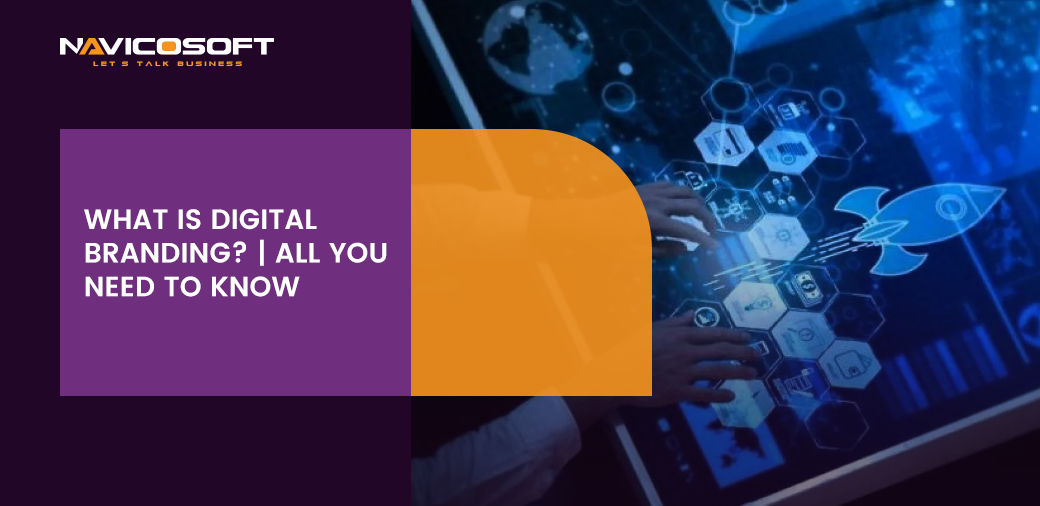Hosting services with real-time fast performance?

What is Digital Branding? | Core Elements and Benefits
What is Branding?
Before getting straight to digital branding, let’s first understand branding. Branding stands as a cornerstone in the world of business and consumerism. To truly understand its significance, we must delve into its layers. Within this vast realm, branding emerges as a modern extension, seamlessly integrating with traditional concepts and emphasizing the essence and importance of branding in today’s digital age.
More Than Just a Name or Logo:
At the mere mention of “branding,” our minds often jump to familiar logos or catchy company names. However, while these are branding elements, the concept encompasses much more. Branding isn’t merely about visual or auditory recognition. Additionally, it’s about creating a distinct identity for a business or product.
The Identity of a Business:
Branding can be likened to an individual’s personality. Just as we recognize a person by their character, demeanor, and the emotions they evoke in us, businesses similarly establish their presence. A brand identity is built on values, promises, and the experiences it offers, shaping how consumers perceive it.
Eliciting Emotions:
One of the subtle yet powerful aspects of branding is its ability to evoke emotions. Moreover, think about the warm feeling you get when walking into your favorite café or the trust you place in a specific brand of shoes. In addition, these emotions, from trust to comfort to excitement, become associated with the brand, forging a deeper connection with the consumer.
Consistency Across the Board:
Consistency plays a pivotal role in branding. When a brand maintains consistency in the quality of products, customer service, or messaging, it builds a solid foundation of trust. Moreover, this consistency ensures that customers know what to expect over time. It also helps strengthen the bond between the consumer and the brand.
A Continuous Evolution:
The world is in constant flux, and branding isn’t static. As times change, effective branding adapts, ensuring that it remains relevant to its audience. This evolution, however, always stays true to the brand’s core values, ensuring a balance between familiarity and innovation.
In essence, branding is the heartbeat of a business. It’s more than surface-level aesthetics; it’s an intricate dance of identity, emotions, consistency, and evolution. Moreover, it shapes how a business is perceived and resonates with its audience. Effective branding ensures that a business stands out and builds lasting relationships with its consumers in a world flooded with choices.
Understanding Digital Branding
In our rapidly evolving digital era, a prominent term is Digital Branding. To grasp its nuances, let’s delve deep into what this term embodies and its significance in today’s interconnected world.
Beyond Traditional Branding
Traditionally, branding was about giving a product, service, or business a unique identity, primarily through tangible means like logos, packaging, and promotional materials. However, with the digital revolution, the game’s rules have changed. Furthermore, we have entered Online Branding, where this identity creation extends into the vast online world.
The Digital Identity
Just as every individual has a unique personality, every brand strives to carve out its niche in the digital landscape. Firstly, Web Branding is about creating a distinct online presence that echoes a brand’s values, vision, and mission. Furthermore, this encompasses everything from a brand’s website and design to its social media voice.
Engagement in the Digital Realm
The power of Online Branding lies in its interactive nature. Firstly, digital platforms allow brands to engage in two-way communication, unlike traditional mediums. Moreover, this engagement isn’t just about promoting products or services. Instead, it’s about listening, interacting, and building relationships with consumers online.
Content: The Driving Force of Digital Branding
Content reigns supreme, no matter if it’s marketing, advertising, or branding. It’s the medium through which brands share their stories, values, and messages. Whether it’s articles, videos, infographics, or podcasts, this content shapes the brand’s voice and relationship with the digital audience.
Online Consistency
Just as in traditional branding, consistency is key in the digital space. Firstly, whether it’s the tone of voice in a tweet or the aesthetics of an Instagram post, ensuring uniformity across platforms solidifies a brand’s digital identity. Furthermore, this consistent portrayal helps build trust and reliability among online audiences.
Adaptability and Evolution
The digital world is dynamic, with trends and technologies constantly changing. Effective Web Branding recognizes this fluidity, adapting and evolving as necessary. While staying true to core values, brands must also be flexible, embracing new platforms and strategies to resonate with their digital audience.
Digital Branding, in its essence, is the extension of a brand’s identity into the online world. First, it’s a harmonious blend of engagement, content creation, consistency, and adaptability.
Furthermore, as we navigate an increasingly digital-centric world, understanding and harnessing the power of Online Branding becomes essential. Lastly, this approach is pivotal for any business hoping to create a lasting impression in the digital sphere. In this regard, many branding agencies are serving businesses to avail of the online perks. Regardless of the niche businesses can hire a digital branding agency and get started with it.
Digital Branding vs. Digital Marketing: Simplifying the Concepts
In today’s digital age, two terms often stand out in business discussions: Digital Branding and Digital Marketing. While they might seem interchangeable at first glance, they serve distinct purposes. Let’s break down the differences and understand the unique roles each plays in the online realm.
The Foundation: What Are They?
- Digital Branding: Think of this as a brand’s digital fingerprint. Moreover, it’s how a business, product, or service presents itself online. It encapsulates a brand’s values, voice, and overall identity in the digital world.
- Digital Marketing: This, on the other hand, is more action-driven. Additionally, it involves using various online platforms and strategies to promote a product/ service/ brand. In short, it’s about driving specific actions, such as sales or sign-ups.
Purpose and Goal
- Digital Branding: The primary goal is establishing and reinforcing a brand’s online identity. It’s about creating emotional connections, building trust, and fostering loyalty among the digital audience. You might feel comforted when visiting a brand’s website or social media page.
- Digital Marketing: Here, the focus shifts to tangible outcomes. Moreover, online marketing aims to drive traffic, generate leads, and boost sales. Additionally, its goals are more immediate, seeking quick results through campaigns and promotions.
Tools and Techniques
- Digital Branding: This involves content creation, website design, social media presence, and more. Moreover, it’s all about crafting a consistent and relatable digital image for the brand.
- Digital Marketing: This realm uses tools like search engine optimization (SEO), pay-per-click advertising (PPC), email marketing, and affiliate programs to achieve its objectives.
Duration and Impact
- Digital Branding: This is a long-term strategy. Moreover, the effects might take time, but effective Online branding solidifies a brand’s place in consumers’ minds, ensuring they return time and again.
- Digital Marketing: While it can also have long-term impacts, many digital marketing strategies aim for short-term results. It’s about getting the word out quickly and effectively, with clear metrics to measure success.
While intertwined in the vast digital landscape, Digital Branding and Digital Marketing serve unique roles. Moreover, the former builds and nurtures the brand’s digital identity, laying a foundation of trust and connection. The latter, meanwhile, actively pushes the brand’s objectives, driving actions and results. Moreover, Understanding the delicate balance between the two becomes crucial for businesses to thrive in the ever-evolving online world.
10 Benefits of Digital Branding
Building a robust digital brand has become essential for businesses in an era where digital interactions predominate. This shift towards the online realm offers brands a myriad of advantages. Let’s delve deeper into these benefits, understanding them in their full scope.
1. Building Trust and Credibility
Deepening Connections: Online branding isn’t just about logos or colors; it’s about creating an authentic narrative. As businesses consistently share their values, missions, and stories online, they foster a genuine connection with their audience. Over time, this connection metamorphoses into trust, ensuring customers view the brand as credible and reliable in a vast digital market.
2. Round-the-clock Availability
Always On, Always There: The internet never sleeps, and neither does a well-crafted digital brand. With a solid online identity, businesses ensure they’re always available. Moreover, this continuous presence means that whenever a customer feels the urge to explore or purchase, the brand is ready to serve, making interactions seamless and convenient.
3. Global Reach
Breaking Boundaries: The beauty of the digital world lies in its lack of physical borders. Through digital branding, a local brand in a remote village can touch hearts in a bustling metropolis thousands of miles away. Moreover, this global outreach amplifies potential audiences, transforming local businesses into potential global phenomena.
4. Adaptability
Staying Ahead of the Curve: Trends change at lightning speed online. Web branding, with its inherent flexibility, allows brands to adapt quickly. Whether it’s a design tweak in response to user feedback or a shift in messaging due to global events, businesses can remain relevant, timely, and aligned with their audience’s needs.
5. Cost-Effectiveness
Maximizing Budgets: Traditional marketing methods can be capital-intensive. Online branding, in contrast, offers more bang for the buck. From organic search strategies to social media engagement, businesses can achieve significant online traction without draining their coffers, ensuring every penny spent is effectively utilized.
6. Data-Driven Insights
Understanding the Pulse: The digital realm is abundant with data. Every interaction, click, and share leaves a trace. By harnessing these data points, businesses can gain invaluable insights into customer preferences, behaviors, and pain points. These data-driven insights empower brands to refine strategies, ensuring they resonate profoundly and effectively.
7. Enhanced Customer Engagement
Two-Way Conversations: The digital space is interactive. It’s not just about broadcasting messages but also about listening. Online branding opens doors to rich, two-way conversations. Through comments, reviews, and direct messages, brands can engage directly, addressing concerns, celebrating positive feedback, and deepening customer relationships.
8. Streamlined Messaging
Unified Voice: Maintaining a consistent brand message can be challenging with numerous digital touchpoints, from websites to social channels. However, effective online branding ensures a streamlined, unified voice across platforms. This coherence reinforces brand identity and assures customers of stability and reliability.
9. Long-Term Relationship Building
Beyond Transactions: While immediate sales are essential, online branding looks at the horizon. It’s about weaving long-standing narratives and consistently delivering value. Over time, this approach transforms one-time customers into loyal brand advocates, ensuring sustained growth and stability.
10. Competitive Advantage
Standing Tall Amongst Peers: In a saturated digital market, how does one brand stand out from another? Online branding offers the answer. A robust digital identity distinguishes a brand, ensuring it’s the first name customers think of amidst a sea of competitors.
Online branding is not a luxury but a necessity in today’s age. Its benefits are manifold, from fostering trust to ensuring global reach and offering data-driven insights. As the digital tapestry continues to evolve, businesses armed with a potent digital brand are the ones poised to thrive.
10 Fundamental Components of Successful Digital Branding: A Deep Dive
Digital branding is more than just an online presence—it’s an art and a science. Successful online branding intricately weaves various components to create a compelling online narrative. Let’s explore these elements more profoundly.
1. Clear Brand Vision: The Guiding Star of a Brand
Every journey, whether a cross-country trip or a venture into the business world, requires direction. This is where a clear brand vision steps in, acting as the compass guiding a brand through the vast market expanse.
What is a Brand Vision?
Simply put, a brand vision is the long-term goal of a brand. It’s not about the products they sell or the immediate services they offer. Instead, it paints a picture of where the brand sees itself in the future. It answers questions like: What impact does the brand wish to make? Whom does it aspire to serve? What legacy does it hope to leave?
Why is it Crucial?
Imagine building a house without a blueprint. Sounds chaotic. That’s how businesses without a clear brand vision operate. This vision offers a roadmap, helping brands navigate challenges and celebrate milestones. It ensures that every decision made aligns with the bigger picture.
More Than Just Words
It’s essential to note that a brand vision isn’t just a fancy statement on a website or a poster. It’s the driving force behind actions. When a brand faces a dilemma, the vision provides clarity. When there’s a new opportunity, the vision helps evaluate its relevance.
A Unifying Force
Multiple teams work together in any business, from product development to marketing. A clear brand vision acts as the thread that binds them. Everyone knows the end goal, ensuring synchronized efforts and cohesive actions.
Connecting with the Audience
Lastly, a brand vision isn’t just for internal guidance; it’s also for the audience. When customers understand a brand’s vision, they can connect more deeply. It gives them something to believe in, making them consumers and advocates.
A clear brand vision is the guiding star, always visible, always pointing the way. It’s not merely about following current market trends but about carving a unique path for the future with digital branding at its core. Providing direction, unity, and a deeper connection with the audience ensures the brand sails smoothly toward its destined horizon in the digital realm.
2. Consistent Brand Identity: The Signature of Your Brand
Imagine walking into a room where every person wears the same outfit and speaks in the same tone. How difficult would it be to identify someone you know? Just as individual identity helps us recognize a person, a consistent brand identity helps customers recognize and remember a brand in the cluttered marketplace.
What is a Brand Identity?
In simple terms, brand identity is the collection of all visual and verbal elements representing a brand. This includes the logo, colors, typography, voice, and even the images a brand uses. It’s like the face of the brand – the first thing people notice and remember.
The Role of Consistency
Why is consistency so important? Think of your favorite book. If every chapter had a different writing style, it would be jarring. Similarly, a consistent brand identity ensures that they instantly recognize it no matter where customers encounter the brand—be it on social media, a billboard, or a product package.
Building Trust with Consistency
Consistency does more than make a brand recognizable; it builds trust. When customers see the same colors, logo, and tone every time, it reassures them. They know what to expect, and this familiarity fosters trust. In contrast, inconsistency can create confusion and doubt.
Adapting While Maintaining Identity
While consistency is crucial, it’s equally important to adapt and evolve. However, any change should still resonate with the brand’s core identity. For instance, a logo might be modernized over time, but its essential elements or colors remain familiar.
The Power of Recognition
A consistent brand identity is powerful. It’s like a song that reminds us of a particular time or a scent that takes us back to a memory. Every time customers encounter consistent brand elements, it reinforces their memory and connection with the brand.
Consistent brand identity in digital branding is about something other than being repetitive but about creating a stable and memorable presence in the market. By maintaining consistency in visuals and voice, especially on digital platforms, a brand not only stands out but also earns the trust and loyalty of its customers. The digital signature remains etched in the audience’s minds, creating a bond that goes beyond products and services.
3. Authenticity: The genuine essence that helps boost digital branding
Its authenticity truly sets a brand apart in a world overflowing with brands vying for attention. Authenticity isn’t just a buzzword; it’s the heartbeat of genuine connections, trust, and longevity in the business landscape.
What Does Authenticity Mean?
Authenticity means staying true to who you are, what you stand for, and where you come from. For brands, it’s about presenting a genuine image, not just what you believe consumers want to see. Brands bring honesty and transparency to their audience, whether in successes or failures.
The Trust Factor
Consumers today are more informed and discerning than ever. They crave genuine interactions and can quickly discern between genuine brands and those putting on a facade. Authenticity, when practiced consistently, builds a layer of trust. This trust ensures that even when the market is swaying with new trends and fads, customers remain loyal to the brand they believe in.
Beyond the Products and Services
While quality products and services are crucial, authenticity goes beyond that. It’s about the stories the brand shares, the values it upholds, and the transparency with which it operates. An authentic brand does not shy away from addressing issues or admitting when they are at fault. This vulnerability makes them relatable.
The Role in Building Relationships
Brands are more than just faceless entities selling products or services, especially in the age of digital branding. They have personalities, stories, and values that come alive online. Authenticity ensures that the brand’s personality shines through in the digital realm, paving the way for genuine customer relationships. When consumers believe in a brand’s authenticity, especially in its online branding efforts, they don’t just purchase; they advocate and champion the brand.
The Long-Term Perspective
Authenticity isn’t a short-term strategy or a marketing campaign. It’s a long-term commitment to honesty, transparency, and genuine interactions. Over time, this commitment ensures the brand’s reputation is solid, and its connection with the audience deepens.
Authenticity is the soul of a brand. In an age where consumers are flooded with choices, being genuine is the anchor that keeps a brand grounded and connected with its audience. By being true to its essence, values, and promises, a brand not only ensures growth but also carves a special place in the hearts of its consumers.
4. Engaging Content: The Bridge Between Brands and Consumers
In the digital age, content is not just king; it’s the entire kingdom. Engaging content bridges brands to their target audience, fostering communication, understanding, and loyalty.
Understanding Engaging Content
Engaging content is not merely about information; it’s about presenting this information in a captivating manner. It resonates with the audience, holds their attention, and triggers an emotional or intellectual response, whether a blog post, video, or tweet speaks directly to the viewer, reader, or listener.
The Power of Storytelling
One of the most effective ways to make content engaging is through storytelling. Humans have always loved stories. They are relatable, evoke emotions, and are memorable. When brands incorporate storytelling into their content, they are not just selling a product but sharing an experience.
Personalization is Key
The era of generic content is long gone. Consumers expect content tailored to their preferences, needs, and behaviors today. Personalized content shows consumers the brand understands and values them, which can be a powerful tool in building trust and fostering loyalty.
Keeping It Interactive
Live videos, polls, and other interactive elements raise the bar for engagement. It allows consumers to participate actively, making them feel more connected to the brand. It’s a two-way conversation that adds depth to the brand-consumer relationship.
The Role of Visuals
A picture, they say, is worth a thousand words. In today’s fast-paced world, visuals play a pivotal role in engagement. Infographics, images, videos, and animations can convey complex messages succinctly, making it easier for the audience to absorb and engage with the content.
Consistency in Delivering Value
While creativity and diversity in content creation are essential, consistency remains paramount. Consistently delivering valuable content establishes a brand as a reliable source of information or entertainment, ensuring consumers keep returning for more.
Engaging content is the lifeblood of digital branding. It’s the medium through which brands converse, share, and bond with their audience. By ensuring the content is relatable, personalized, interactive, and valuable, brands can create lasting impressions and build solid and meaningful relationships with their consumers.
5. User-Friendly Design: Crafting an Intuitive Experience
At the heart of any successful digital presence lies a design that puts users at the forefront. In the vast digital landscape, a user-friendly design ensures the journey is as pleasant as the destination.
Defining User-Friendly Design
A user-friendly design is easy to use. It goes beyond just looking good; it’s about functionality and aesthetics. This design approach prioritizes the user’s experience, ensuring they can navigate, interact, and achieve their goals on a platform without unnecessary complications.
The Importance of Simplicity
In the realm of design, less is often more. A cluttered interface can overwhelm users, making them more likely to leave. On the other hand, a simple, clean design emphasizes the most vital information, guiding users smoothly from one point to the next.
Responsiveness is Crucial
With the diverse range of devices available today, a user-friendly design must be responsive. This means that whether a person is on a desktop, tablet, or smartphone, the design adjusts to offer an optimal viewing experience.
Prioritizing Navigation
A map is only helpful if it’s easy to read. Similarly, navigation tools like menus or search bars should be intuitive. Users are more inclined to stick around and visit again if they can quickly find what they’re looking for.
Speed and Performance Matter
Even the most beautifully designed website will lose its charm if it takes forever to load. Efficient design ensures that all elements, from images to scripts, are optimized for swift loading times, respecting the user’s time and patience.
Feedback and Interaction
A genuinely user-friendly design communicates. Users should receive clear feedback When they act by submitting a form or clicking a button. This interactivity assures users that their actions have been acknowledged and processed.
Accessibility for All
An often overlooked aspect of user-friendly design is accessibility. It’s essential to ensure that the design caters to all users, including those with disabilities. This can involve text-to-speech capabilities, high contrast settings, or easy font readability.
User-friendly design is the cornerstone of effective digital branding. The silent guide helps users explore, discover, and connect. By focusing on simplicity, responsiveness, navigation, performance, feedback, and accessibility, brands can offer an experience that is pleasing to the eye and seamless in function, fostering positive and lasting impressions.
6. Social Media Presence: The Digital Handshake
Today’s digital realm can be likened to a vast gathering, and social media platforms are its bustling hubs. For brands, establishing a presence on social media is akin to reaching out for a handshake, a gesture that says, “We’re here, and we’re listening.”
The Modern Meeting Place
Social media isn’t just where people post photos or share updates; it’s where conversations happen. Social media-active brands enter these discussions head-on, prepared to participate and communicate.
Listening and Engaging
Having a social media profile is one thing, but active participation is the key. By responding to comments, joining discussions, or even addressing concerns, brands showcase their value in their audience’s input.
Tailored Content for Each Platform
Each social media platform has its unique flavor. Instagram might be visual-heavy, while Twitter thrives on brevity. By tailoring content to fit each platform’s style, brands can resonate more deeply with their followers.
Building a Community
Over time, consistent and genuine interactions on social media can lead to forming a community. This isn’t just an audience; it’s a group of advocates, supporters, and friends who bond with the brand.
In the digital age, a brand’s social media presence is its face, voice, and ears. It’s where connections are made, relationships are nurtured, and communities are built. Through active and genuine participation, brands can transform their social media platforms from mere profiles into thriving digital homes.
7. SEO Strategy: The Roadmap to Digital Visibility
Navigating the vast landscape of the internet requires a compass, and for many brands, this compass is their SEO (Search Engine Optimization) strategy integrated with digital branding. It ensures that when someone searches for something relevant, the brand, with its distinct online branding, is waiting to be discovered.
Understanding the Basics
SEO is about optimizing a website to appear higher on search engine results. This entails adjusting several factors on and off the website to increase its “attractiveness” to search engines like Google.
Keywords: The Foundation
At the heart of SEO lies keyword research. By understanding what terms or phrases people use when searching, brands can tailor their content to match these queries, improving the chances of being found.
Quality Over Quantity
While it’s essential to incorporate keywords, the quality of the content is paramount. Search engines favor relevant, informative content that adds value to the reader.
Mobile Optimization
Users that browse on mobile devices are increasing. An efficient SEO strategy guarantees a mobile-friendly website that provides a seamless experience on any device.
Staying Updated
The SEO industry is constantly changing. New trends appear as search engine algorithms change. Regularly updating the SEO strategy ensures that a brand remains on top of these shifts, maintaining or improving its search engine ranking.
An SEO strategy is a beacon that guides users to a brand’s digital doorstep. By focusing on keywords, quality content, mobile optimization, and staying updated, brands can remain visible and relevant in the ever-changing digital landscape.
8. Feedback Loop: The Cycle of Continuous Improvement
In digital branding, the journey continues once a product is launched or a service is offered. It’s the beginning of an ongoing conversation with users. Central to this conversation is the feedback loop, a crucial mechanism that allows brands to learn, adapt, and evolve based on their audience’s input.
What is a Feedback Loop?
A feedback loop is a process in which the outcomes of an action are returned and used as input for future improvements. In simpler terms, it’s like listening to what your audience has to say and then using that information to make informed decisions.
The Role of Technology
Modern technology has made it easier than ever to establish effective feedback loops. Tools and platforms, from simple online surveys to intricate analytics software, provide brands with insights into how users interact with their digital presence.
Learning from the Audience
Every click, like, share, or comment is a piece of feedback. Brands that pay attention can discern patterns, identify preferences, and spot areas needing tweaking or complete overhaul.
Adapting and Evolving
Once feedback is gathered, the real work begins. It’s about taking those insights and translating them into actionable changes. Whether redesigning a webpage, adding a new feature, or correcting a mistake, the feedback loop ensures that the brand remains agile and responsive.
Strengthening the Connection
Beyond the practical benefits of improvements and refinements, seeking and valuing feedback fosters trust. Users appreciate when their opinions are considered, which deepens their connection to the brand.
Feedback loops are the heartbeat of continuous improvement in the digital realm. Firstly, by regularly seeking feedback, brands enhance their offerings. Secondly, by analyzing it, they identify areas of improvement. Furthermore, acting on this feedback reinforces the bond they share with their audience. Consequently, this ensures longevity and loyalty.
9. Adaptability: The Heartbeat of Modern Brands
In the fast-paced world of the digital age, brands need to keep moving, or they’ll get left behind. Digital branding helps brands stay current and adapt. If they don’t change with the times, they won’t just survive but thrive.
A Fluid Digital Landscape
With the speed at which technology and user preferences evolve, the digital space remains in constant flux. Firstly, today’s trending app or platform might find itself overshadowed tomorrow. Consequently, sticking to one strategy or platform can be difficult for brands.
Welcoming Change with Open Arms
Being adaptable means more than just being prepared for change; it’s about wholeheartedly embracing it. Brands that cultivate a mindset of adaptability often find themselves ahead of the curve, anticipating shifts rather than merely responding to them.
Staying Nimble and Agile
In practical terms, adaptability often manifests as agility. Firstly, if a marketing strategy isn’t delivering the desired results, adaptable brands are quick to tweak their approach. Secondly, they might even adopt a new strategy, thereby always ensuring they remain aligned with their core objectives.
Lessons from the Past
One of the cornerstones of adaptability is learning. By reflecting on past strategies, understanding what delivered results, and recognizing areas of improvement, brands can pave a more informed path forward.
Facing Uncertainty Head-On
The future, by nature, is unpredictable. However, adaptable brands are open to this uncertainty. Instead, they face it head-on, confident in their ability to pivot as situations demand.
In summary, adaptability is the lifeline in the unpredictable waters of the digital world. Firstly, by welcoming change, brands ensure their relevance. Secondly, by staying agile, and thirdly, by constantly learning, they position themselves for growth. Lastly, by facing the future with unwavering confidence, they remain steady no matter how the digital landscape shifts.
10. Data-Driven Decisions: Steering Brands with Precision
In the online world, data is vital. Brands need to find out what people want. With digital branding, they use accurate data to make intelligent choices. This way, they know they’re on the right path and can connect better with their audience.
The Emergence of Data
In the vast digital universe, every interaction leaves behind a data trail. From clicks to likes and from shares to purchases, these data points collectively form a narrative. Brands that can interpret this narrative gain a decisive edge.
Beyond Gut Feeling
While instincts and creativity have their place, the digital age demands more concrete bases for decision-making. Data offers this foundation. It allows brands to move from vague assumptions to decisions grounded in reality.
Real Insights in Real-Time
The beauty of digital data lies in its immediacy. Firstly, brands don’t have to wait months to gauge the success of a campaign. Secondly, real-time analytics provide instant feedback. Consequently, this allows for swift adjustments when necessary.
Crafting Personalized Experiences
Data isn’t just about numbers; it’s about understanding individual preferences and behaviors. With this knowledge, brands can create tailored user experiences, enhancing engagement and fostering loyalty.
Risks and Responsibilities
While data is a powerful tool, it comes with responsibilities. Brands must ensure the privacy and security of their users’ data. Being transparent about data collection and adhering to regulations is crucial.
In essence, data-driven decisions are the compass by which modern brands navigate the digital landscape. Firstly, brands can make informed choices by harnessing the power of data. Secondly, they can cater to individual needs. Lastly, they can do so responsibly. As a result, a brand that resonates deeply and effectively with its audience.
Future of Digital Branding: Venturing Beyond the Horizon
The digital landscape is ever-evolving, with technological advances and shifting consumer preferences reshaping its contours. As we gaze into the future, specific trends and innovations signal the trajectory digital branding is poised to take.
Embracing Augmented and Virtual Realities
Augmented reality (AR) and virtual reality (VR), until recently, belonged to science fiction, are now frequently employed. Brands are exploring these realms to offer immersive experiences, transporting users to virtual stores or letting them “try” products in augmented spaces.
Personalization at its Peak
With the surge in data analytics capabilities, hyper-personalization is the next frontier. Brands will increasingly curate experiences tailored to individual preferences, predicting users’ needs before they articulate them.
Sustainable and Ethical Branding
As global challenges intensify, brands recognize the importance of sustainability and ethical practices. The future will see brands marketing their products and their values, making genuine efforts to contribute positively to the world.
Voice Search and Smart Assistant Growth
The way users search for information is changing. With the proliferation of intelligent assistants like Alexa or Siri, voice search will dominate. Brands will adapt, optimizing their content to cater to this voice-first approach.
Navigating the Blockchain Terrain
Blockchain isn’t just about cryptocurrencies. Its potential for ensuring transparency and authenticity in branding is immense. Brands might leverage blockchain to verify product origins, ensuring authenticity and building trust.
The future of online branding is a tapestry of technological innovation, heightened personalization, ethical considerations, and new modes of interaction. Brands that can adeptly navigate this dynamic terrain, always putting their audience at the heart of their strategies, will thrive in this exciting future.
Wrapping up all about the Digital Branding
Firstly, several elements combine to craft a brand’s story and image. Secondly, from the foundation of a clear vision to the importance of adaptability, each component serves as a crucial puzzle piece.
However, as we’ve delved into these facets, it’s evident that a successful digital brand relies on more than aesthetics or catchy content. Moreover, it’s about understanding your audience, leveraging data, and staying agile in an ever-evolving digital landscape.
Furthermore, as technology continues to push boundaries, the brands that remain rooted in authenticity while embracing innovation will undoubtedly lead the way. In conclusion, the future of online branding is a blend of tradition and innovation, with a singular focus on creating genuine, lasting connections with audiences.













